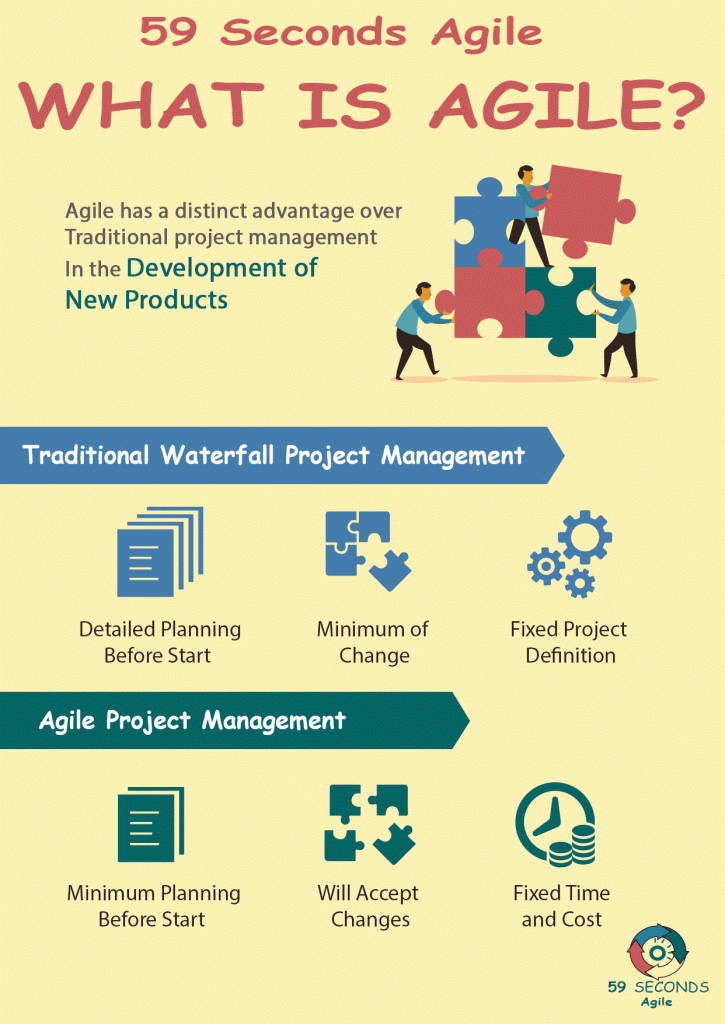Estimating and Planning Agile User Stories
A 59 Seconds Agile Training Video
Continue to Part 5 Below
Introduction to Estimating User Stories
A 59 Seconds Agile Article
This article provides an ‘Introduction into Estimating User Stories’ and looks to discuss what a user story is and the methods of estimation and planning within Agile projects.
Deciding on a Point System
We want to estimate quickly and confidently, so it is important not to overthink the range of story points to be used. Here are a few options:
One option is numerical sequence. An example of this is the Fibonacci sequence: 1,2,3,5,8, 13 and so on. The Fibonacci sequence, is where the next number in the sequence is the sum of the previous two numbers. For example 2+3 = 5, 3+5 = 8 etc. This gives; 1,2,3,5,8, and so on. This sequence is used with “Planning Poker”.
Another common estimation technique is called ‘Fist of Five’, which has the following numbers 1,2,3,4,and 5.
Lastly, the use of T-shirt sizes, extra small, Small, Medium, Large and extra large, is another option to think of relative sizes of features. The aim of only having a few choices is to make the decision-making quick. We also do not recommend a value of zero, it implies that a story that scores zero adds no value to the project, so why has it been included? It also affects our velocity calculations.
The next thing to consider is the selection and estimation of a base story.
Continue Reading —> Next
Estimating User Stories
A 59 Seconds Agile Video Animation
Continue Reading —> Next
User Stories Applied
A 59 Seconds Agile Book Review
User Stories Applied by Mike Cohn is one of our favourite books on Agile User Stories. The book starts with an overview into user stories, and details what a user story is and the different aspects of them. He then discusses how to go about writing a user story, and provides details of the INVEST criteria that can be used to determine if the story is meeting all of its objectives. Next Mike gives an in depth discussion of who user stories are written for and where to begin when gathering the details for them. The book then discusses acceptance testing user stories, including how to go about specifying these criteria and the responsibilities of the development team and customers during this process.
Continue Reading —> Next
What is Agile?
A 59 Seconds Agile Infographic

Continue Reading —> Next
Agile Scrum Master Training Course
Our Favourite Agile Books
We found these books great for finding out more information on Agile Scrum:
Continue Reading —> Next


